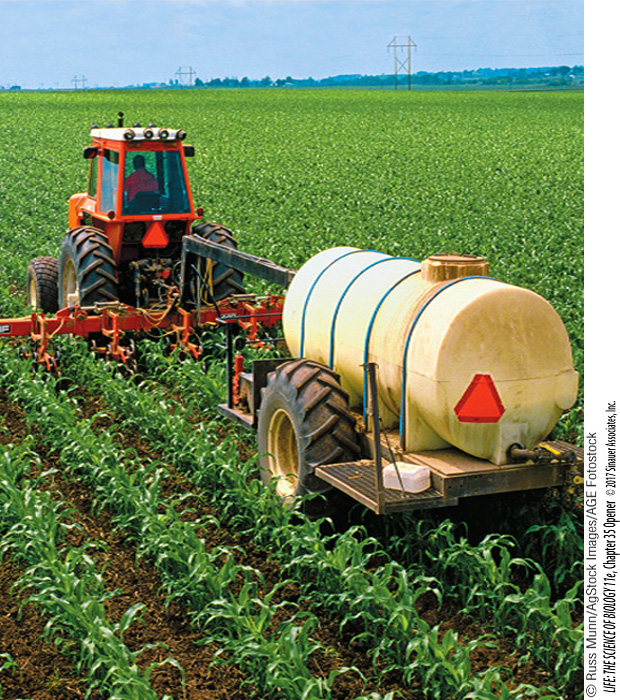Chapter Introduction
750
35
key concepts
35.1
Plants Require Nutrients
35.2
Plants Acquire Nutrients from the Soil
35.3
Soil Structure Affects Plant Nutrition
35.4
Soil Organisms Increase Nutrient Uptake by Plant Roots
35.5
Carnivorous and Parasitic Plants Obtain Nutrients in Unique Ways
Plant Nutrition

investigating life
Improving Plant Nutrition to Feed the World
Crops such as rice, wheat, and corn supply more than half of the human diet. Plants require good nutrition in order to grow and one of the nutrients often in short supply in soils is nitrogen. Organic farmers traditionally supply nitrogen by spreading animal waste (manure) over the field; as nature takes its course, the complex macromolecules in manure are broken down to ammonium (NH4+).
In 1917, Fritz Haber and Carl Bosch invented a way to make ammonia in the factory, revolutionizing crop plant nutrition. The Haber–
Second, nitrogen fertilizer is also environmentally expensive. When it rains excessively, nitrogen fertilizer can be lost from farm fields and end up in lakes, rivers, or groundwater. When nitrogen-
Scientists are working on several strategies by which nitrogen fertilizer might be used more efficiently. One strategy is to improve farming practices, by applying optimal rates of nitrogen to crops while reducing losses to the environment. The other strategy is to alter the genetics of crop plants to improve their uptake and assimilation of nitrogen. Many processes are involved in a plant’s use of nitrogen from the soil, such as uptake into the roots, transport to other organs in the vascular system, and incorporation of nitrogen into organic molecules such as amino acids and nucleotides. Each process involves many genes, underscoring the complexity of inheritance.
How can nitrogen use efficiency be improved?